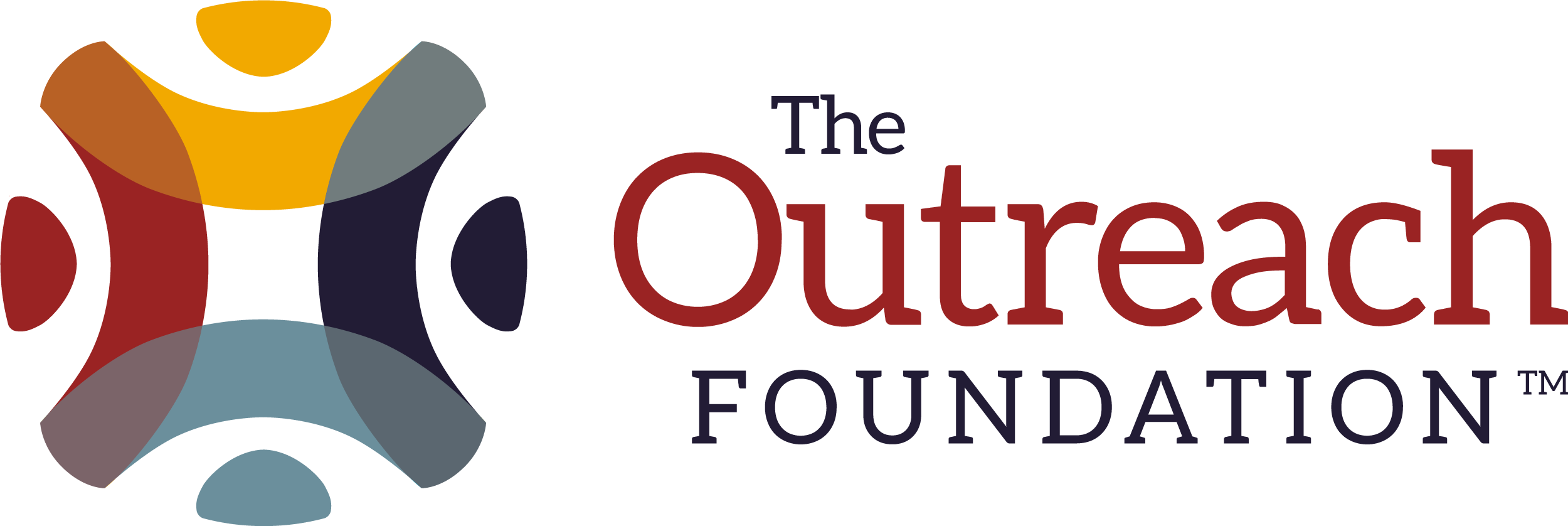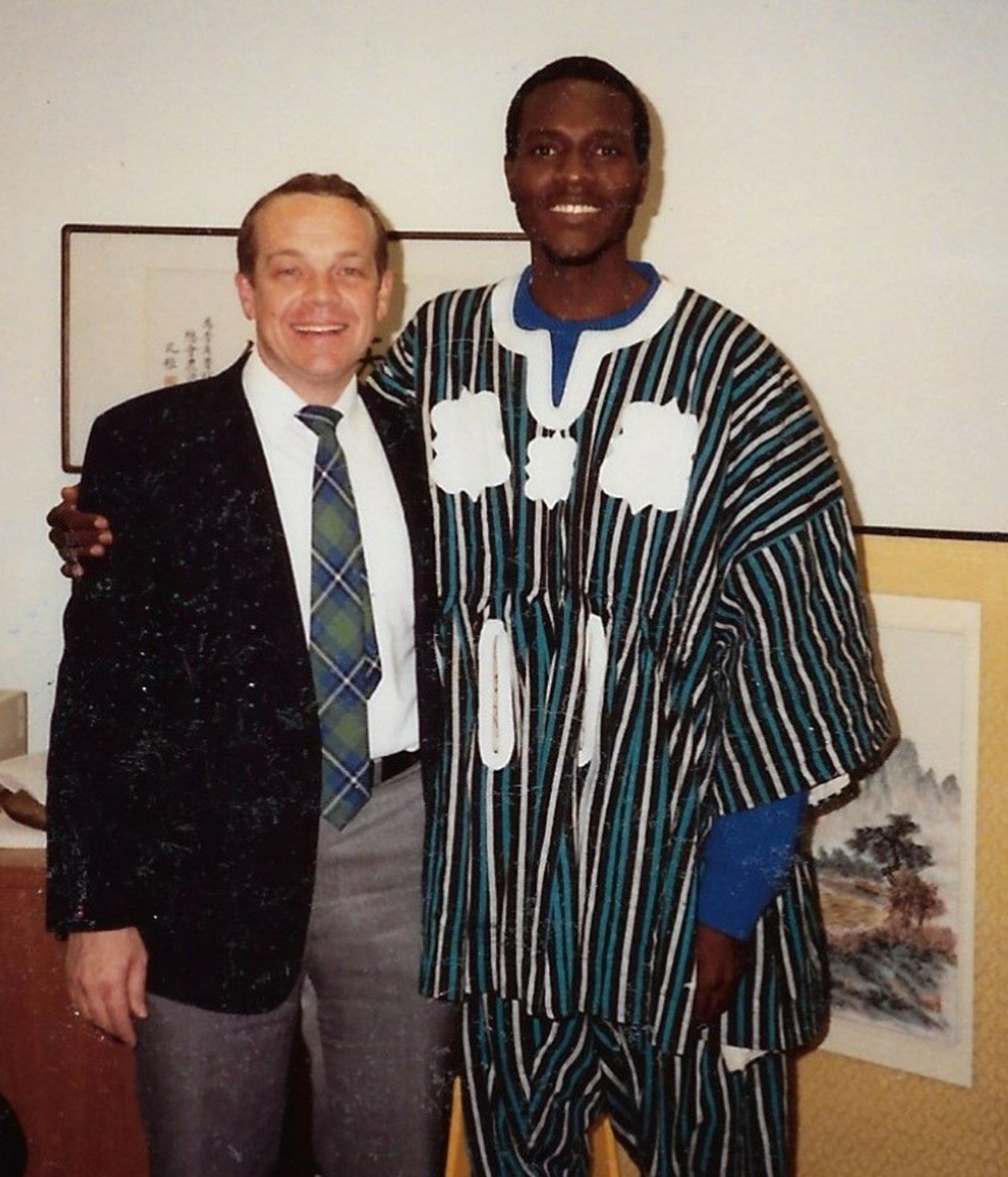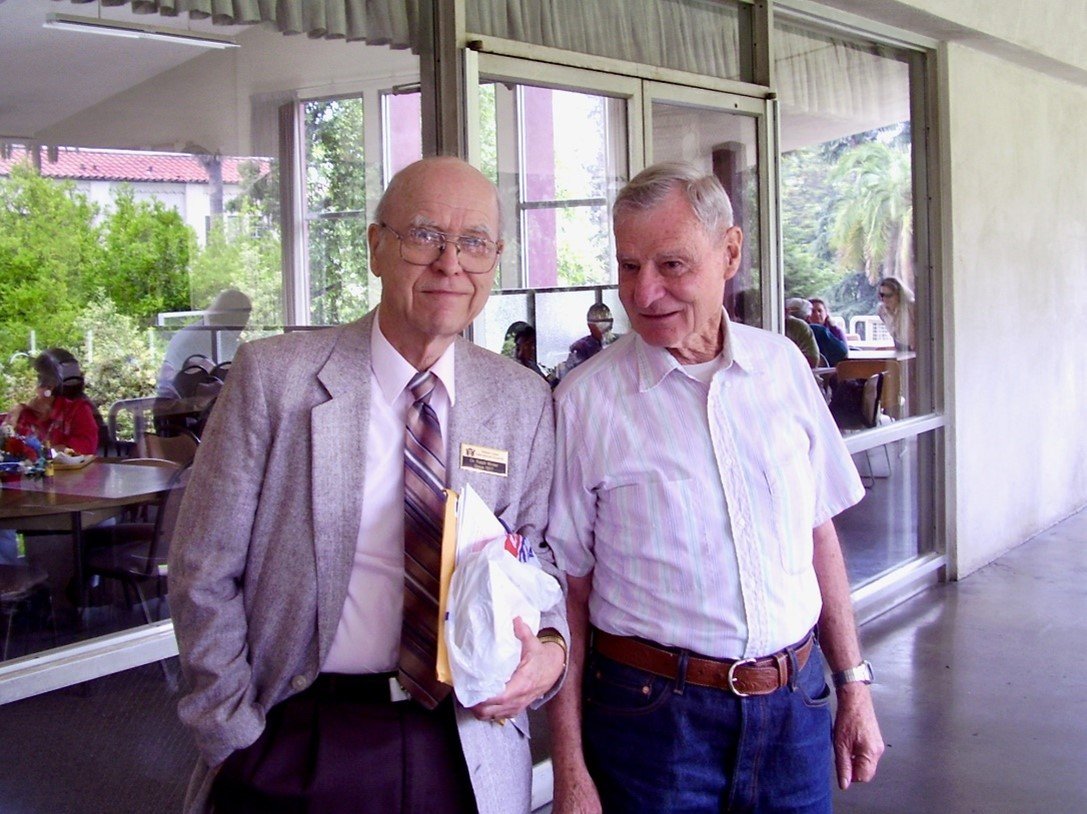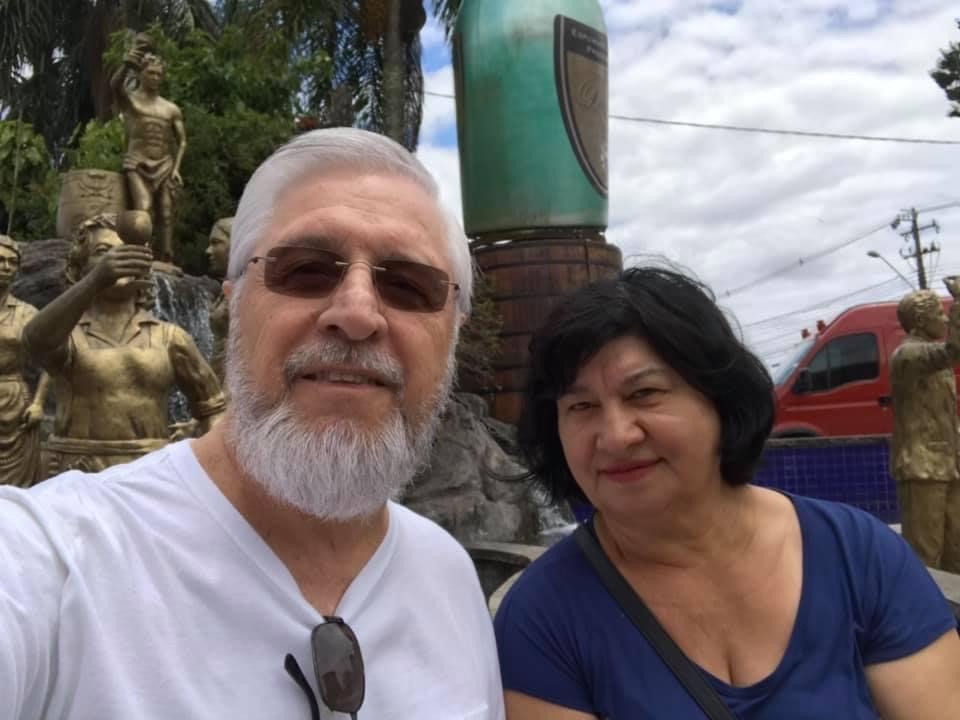History of The Outreach Foundation in Ghana: The Northern Outreach Program
Chapter 3
The Northern Outreach Program: Missional Renewal in Ghana That Encouraged New Evangelistic Initiatives of the PCUSA
“When You See Someone Climbing a Good Tree….”
Beginning of the Northern Outreach Program
On several of their trips to Ghana in the late 1980s and early 1990s, Bill and Nancy Warlick met two dedicated young Presbyterian pastors, John Azumah and Solomon Sule-Saa. They were leaders of a specialized evangelistic outreach of the Presbyterian Church of Ghana to people from northern Ghana who had moved to southern Ghana in search of work. This initiative, the “Northern Outreach Program,” caught Bill Warlick’s attention, and he included it under the umbrella of the Project for Evangelism and Church Growth in Africa. This chapter will chronicle the history of the Northern Outreach Program and its impact on several evangelistic initiatives that were emerging within and beyond the PCUSA.
We have seen in this short history that the testimonies of American Presbyterians regarding the Presbyterian churches in Ghana have been universally positive. It was a well-organized church with effective leadership. The churches were lively in worship and had a variety of mission projects including evangelism, education, health, and development work. Among themselves, Ghanaians saw a different picture. Like established churches in any culture, a cycle of decline had set in among the churches of Ghana. Although Ghana as a whole was considered 60% Christian in the 1980s, mainline churches, including the Presbyterians, had begun to drop in membership. A study revealed that less than 11% of the population attended church of any kind.
To address this situation a group called the Ghana Evangelism Committee was formed as a joint venture among Ghanaian church leaders and foreign mission organizations. The Rev. Dr. Isaac Fokuo, PCG Director for Ecumenical and Social Relations in the late 1980s, described the Ghana Evangelism Committee as a “child of the churches” that played a catalytic role in calling them to more faithful evangelism and mission. [1]
The Ghana Evangelism Committee surveyed Ghana’s churches in the mid-1980s and discovered that 15,000 towns and villages were without any church. Its research also unearthed a “hidden mission field” of people from northern Ghana who had moved to southern Ghana in search of jobs and a better life. These internal migrants had been largely neglected by many churches in the south for several reasons. Ghanaian Christians in the south generally assumed that all people from northern Ghana were Muslim and, therefore, did not consider evangelizing them. In fact, however, many northern people were not devout Muslims. Rather, they were adherents to traditional religions, and a few were Christians. Second, although over sixty languages were spoken in Ghana, the churches of the two Presbyterian communions worshiped primarily in four of them. Simply by virtue of language, northerners, who had moved to the south but who could not speak Twi, Ga, Ewe, or English, were excluded from participating in worship in most of the 22,000 churches all around them. In short, the churches in southern Ghana were surrounded by a mission field they did not see.
When this research was presented by the Ghana Evangelism Committee to a gathering of over 550 national and regional heads of churches and parachurch ministries in June 1989, the representatives of the Presbyterian Church of Ghana responded. They decided to reach out to northerners living in the south and appointed two new graduates of Trinity Theological College, Solomon Sule-Saa and John Azumah, to initiate this work.
Solomon Sule-Saa grew up in a Muslim family in northern Ghana. When it was time for him to go to secondary school, he moved from his village to the city of Tamale and lived with an uncle, a Christian, who worked for the Presbyterian Church of Ghana’s Agriculture Station in Tamale. One of the Christian staff of the Agriculture Station took an interest in him and sponsored Solomon to attend a Christian youth camp. Although Solomon considered himself a devout Muslim, he went to the camp and there he became a follower of Jesus.
“That was the turning point in my life,” Solomon shared in a testimony to some American Presbyterians visiting Africa in 1995. Solomon now desired to share the good news of Jesus with Muslims in northern Ghana. His pastor at the time, the Rev. Dr. Isaac Fokuo, advised Solomon to finish school, get a profession, and further equip himself for the mission that was on his heart. Following training as a teacher, Solomon went to Accra in 1986 and enrolled in Trinity Theological College. Upon graduation, he was appointed to begin the new Northern Outreach Program of the Ga Presbytery in Accra in September 1989.
John Azumah was also raised in a Muslim family in northern Ghana. He left his village for secondary school, and it was at this Presbyterian-related institution that he became a follower of Jesus Christ. Pastor Isaac Fokuo, who had influenced Solomon Sule-Saa, was also a mentor to Azumah during a three-year program in Tamale where he trained to become an evangelist. John then went to Trinity to study for the ministry. Although he was now a Christian, an uncle who was a Muslim paid for his theological education. When John finished his studies, he too was selected to be one of the leaders of the Northern Outreach Program. In November 1990, he was sent to Kumasi where large numbers of northern peoples had also migrated.
Mission strategy of the Presbyterian Church of Ghana
How did these young pastors go about their work in Accra and Kumasi? They developed a three-fold ministry to reach the northern peoples who had come to the south: literacy in the mother tongues of the northern groups, vocational training and job creation, and worship in the mother tongue of each people group or tribe. They found Presbyterian congregations who were willing to be part of the new Northern Outreach Program. These churches provided space for fellowships of northerners to worship. Their members taught the literacy classes and helped with vocational training. They also provided material donations to aid the new congregations that arose from the ministry.
The work was hard, but by 1995 almost thirty churches had been established among the Frafra, Bulsa, Talensi, Kasena, Kusasi, Gurima, Mamprusi, and other northern people groups in Greater Accra and Kumasi. The work expanded to other presbyteries in southern Ghana and by 2014, after twenty-five years of sustained effort, sixty northern congregations representing nine language groups had been formed in eight presbyteries of the Presbyterian Church of Ghana.
The converts from among the northern people wanted to share this good news they had received in the south with their fellow tribespeople in northern Ghana. They began organizing evangelistic missions which they termed “Operation Go Back Home and Tell,” (see Luke 8:39 and 10:1–24). Working in cooperation with Presbyterians and other Christian groups in northern Ghana, they visited homes, prayed for the sick and those needing deliverance from demonic forces, held preaching missions, and met with traditional chiefs. During these missions, they also distributed clothing they had collected from church members in southern Ghana. The fruit of these missions included planting new churches, growth in the number of disciples of Jesus, and strengthening the faith of those who took part in the work.
Bill and Nancy Warlick were inspired by this initiative of the Presbyterian Church of Ghana and spent time with the new congregations of the Northern Outreach Program on their visits to Ghana in the early 1990s. Following is a report of one of those encounters in 1993.
One of the most compassionate ministries [of the Northern Outreach Program] is among the Frafras at the Kantamanto Market in the heart of Accra. During the day it is a thriving market area with the entrances lined with stalls that sell all types of fowl. Most of the Frafras are engaged in this work, i.e. selling chickens, turkeys, pigeons, etc. . . . At night some fifty young men and women gather twice a week to learn to read and write. Eight elders from the Kaneshie Presbyterian Church lead the classes. The Kaneshie Church also bought and installed three fluorescent lights in that section of the market as well as benches for the students to sit on.
Just outside this thin wooden wall, nightlife goes on, sometimes loudly, for this is also home for most of these people who sleep on the ground or on a bench near their fowl. They have to pay for water to drink, for a shower, and to use the toilet. They are a people living on the edge.
It is impressive not only to see the enthusiasm of the literacy classes but also the worship of the people before and after the class begins. Worship is led by a northern convert, Michael Aniah. Michael, who sells turkeys and sleeps in the market, was crippled from an improper injection when he was a child. As he leads the singing, leaning on his crutches, it is not despair that one sees in his face, but rather joy and hope that has come to him through the love of God in Jesus Christ.
The same enthusiasm is carried over to the 50–75 people who worship in these same stalls on Sunday morning, singing and praising God in their own Frafra language. Having been ministered unto, this group of people is reaching out to start another cell in a nearby market. Michael and his northern brothers and sisters have virtually nothing, but through the compassionate, loving outreach of Solomon Sule-Saa and the Kaneshie Presbyterian Church, they have become rich in Jesus Christ.
The PCUSA shares in this ministry through the Project for Evangelism and Church Growth in Africa and the Frontier Mission Fellowship.
The Warlicks spoke and wrote of the Northern Outreach Program of the Presbyterian Church of Ghana in the spirit of Woforo Dua Pa A, which is loosely translated, “When you see someone doing a good thing, you give them a hand up.” They saw their Ghanaian brothers and sisters in Christ doing a good thing and gave them a push of encouragement by advocating support for it through PECGA. In 1992 they went another step by inviting the Rev. Solomon Sule-Saa to the United States under the “Mission to the USA” program of the PCUSA.
Solomon Sule-Saa and the “Mission to the USA” Program
To understand the context of this invitation to Sule-Saa, one must look back at Bill and Nancy Warlick's history. In 1991 civil unrest in Zaire forced American Presbyterian mission co-workers, including the Warlicks, to evacuate from the country. Bill and Nancy were temporarily assigned to the PCUSA General Assembly as “Missionaries in Residence.” From the G.A.’s Office of International Evangelism in Louisville, Bill continued to administer the Project for Evangelism and Church Growth in Africa for western and central Africa, and his responsibilities were expanded to include correspondence with the coordinators for PECGA in southern and eastern Africa. [2]
The PCUSA had a program whereby a congregation or presbytery could invite someone from one of the global mission partners of the PCUSA to spend up to six weeks among them as a mission partner. Bill saw this program as an opportunity to bring the Northern Outreach Program to the attention of mission-minded congregations, so he arranged a six-week trip for the Rev. Sule-Saa to come and tell the story of what God was doing in Ghana through this initiative of the Presbyterian Church of Ghana.
Solomon spent the first two weeks of his “Mission to the USA” assignment as a missionary to the Evangelism staff of the PCUSA, then moved to churches in Kansas, Washington, and elsewhere. Sometimes the Warlicks accompanied him; sometimes he was on his own. Wherever he went, Solomon inspired people with his winsome, infectious faith and his deep love for God and the people he was serving.
The timing of Solomon Sule-Saa’s visit was significant. At the 1991 General Assembly, two evangelism resolutions were passed. One was the policy statement on evangelism, “Turn to the Living God,” cited in the previous chapter. The other resolution was the report of the Task Force on Church Membership Growth, which had set forth recommendations for the PCUSA to develop a national strategy for new church development and an overall plan for church development among minority peoples within the United States. Research had shown that the PCUSA was 93% white and only 7% non-white at the time.
The impact of the testimony from a Presbyterian Church of Ghana pastor telling how they had responded to their blindness of the mission field among them added energy and urgency to the recommendations for action that had been approved by the PCUSA’s General Assembly. Within a few years, the PCUSA had set an aspirational goal for the denomination to be 20% non-white by the year 2010.
Solomon’s testimony about the cross-cultural outreach of the Presbyterian Church of Ghana within its own country added impetus to another initiative of the PCUSA, the Frontier Mission Program. This program came about through the efforts of Presbyterian Frontier Fellowship, a new Presbyterian mission organization launched in 1981 as part of the UPCUSA. Its founders, the Rev. Harold Kurtz and the Rev. Dr. Ralph Winter, were former missionaries who had been sent by Presbyterian churches in the northern U.S. They looked at the state of Christianity in the world and saw that many people and language groups still had no church. They became an advocacy organization within the UPCUSA and built relationships with those at the General Assembly level who were responsible for evangelism. By the late 1980s, the now-united Presbyterian Church (PCUSA) approved Presbyterian Frontier Fellowship as a “Validated Mission Support Group.” [3] It also set up an Extra Commitment Project in support of evangelistic mission among the least-evangelized peoples of the world, and it appointed mission co-workers for work among hitherto unreached people groups, such as Kurds living in Berlin, Germany, and the Suri people of Southwest Ethiopia.
As Solomon Sule-Saa itinerated among churches and spent time with General Assembly staff, excitement about the PCUSA’s Frontier Mission Program increased, and commitment to it deepened. What the PCUSA was seeing in the Northern Outreach Program of the Presbyterian Church in Ghana was an example of a worldwide movement of the Holy Spirit to reach the least-evangelized peoples of the world. This movement began in the late 1980s and took the name “AD 2000 and Beyond Movement.” Its slogan was “A Church for Every People and the Gospel for Every Person by the Year 2000.” [4] Presbyterian Ralph Winter was one of those who inspired the movement, and the International Director was the Rev. Luis Bush, a native of Argentina. The Rev. Morton Taylor, on staff in the International Evangelism Office in the former UPCUSA and later the PCUSA, was involved in the AD 2000 Movement almost from the beginning, and he introduced me to the movement when I joined the International Evangelism Office as Missionary in Residence in 1989.
During his visit, Solomon Sule-Saa shared with us newsletters of the Ghana Evangelism Committee (GEC) that showed how deeply it was committed to the same AD 2000 Movement. The GEC set aspirational goals for the churches of Ghana. One of those goals was a challenge to all the churches in Ghana to plant 2000 new churches among “northern and alien [non-Ghanaian] groups in southern Ghana by the year 2000.” [5]
Seeing audacious goals like these emboldened the PCUSA to set its own aspirational goals for mission among the least-evangelized peoples of the world. The Rev. Tom Theriault, who was part of another advocacy group, the Presbyterian Center for Mission Studies that focused on Frontier Mission, suggested in the early 1990s that the PCUSA set a goal of being involved in mission among 200 unreached people groups by the year 2000. His challenge was presented through General Assembly staff to the appropriate church councils and was finally approved as a goal of the PCUSA at the 1996 General Assembly.
There was one more ripple effect of the 1992 Mission to the USA visit of the Rev. Solomon Sule-Saa. When I left the Office of International Evangelism at the end of 1997 to join The Outreach Foundation, I had internalized the commitment of the PCUSA to grow from being a church that was 7% non-white to 20% non-white by the year 2010. This was a new challenge for The Outreach Foundation. Although in its early years The Outreach Foundation had included projects and programs that stimulated evangelism and church development in the United States as well as overseas, by the late 1990s its emphasis was primarily on mission and evangelism outside the United States.
The report of the Task Force on Church Growth had revealed that the 93% white PCUSA was not a church that “looked like America,” to use a phrase popular at the end of the 20th century. I encouraged The Outreach Foundation to support a new church development among Brazilians in northern New Jersey in the late-1990s as a part of a new commitment to evangelistic outreach in the U.S. Raising funds for this initiative proved a challenge, however, and The Outreach Foundation’s participation in this church plant ended after two years. Thankfully, that Brazilian church continues to this day.
A new way for The Outreach Foundation to engage in Portuguese-language new church development arose in the early 2000s when a former missionary to Brazil, the Rev. Frank Arnold, introduced me to the Rev. Jose Carlos Pezini. Pezini, a Brazilian Presbyterian pastor who had come to the United States in 1996, had planted two churches among Brazilians in the Atlanta area and was sensing a call to do this work full-time in and beyond Georgia. The PCUSA had a staff person for church development among Spanish-speaking people, but it had no work among Brazilians in the USA at the time. They were happy for The Outreach Foundation to take up this initiative, and so was Pezini’s presbytery, Cherokee Presbytery. In January 2002 the Rev. Pezini began his work as Coordinator for Ministries among Portuguese-speaking people in the United States. The Outreach Foundation raised Pezini’s salary and travel expenses, and the new fellowships that he organized were given start-up funds by the General Assembly and by the presbyteries in which they were located.
Over a period of ten years, Pezini worked with presbyteries to organize upwards of two dozen Portuguese-speaking fellowships and established programs to train lay leaders for these churches. Then he was sent by The Outreach Foundation to Brazil where he began a new ministry of mentoring pastors who were involved in new church developments in Brazil.
It would be too much to say that these evangelistic initiatives of the PCUSA and The Outreach Foundation were a direct result of the 1992 six-week visit of a young Ghanaian pastor to the U.S. However, Solomon Sule-Saa’s time with the Presbyterian staff at the General Assembly, especially with Bill and Nancy Warlick and me, greatly encouraged us and impacted my future work with the denomination and with The Outreach Foundation. The Akan proverb used to describe the way the Project for Evangelism and Church Growth in Africa encouraged church growth and evangelism in Ghana also captures the way Solomon Sule-Saa inspired us to greater and more intentional evangelistic outreach at home and abroad: Woforo Dua Pa A, “When you see someone climbing a good tree, you give that person a boost.” Thank you for your encouragement, dear brother Solomon Sule-Saa!
———
[1] From an interview in Spring 2021.
[2]Nancy Warlick’s role in Presbyterian World Mission was as advocate for justice and human rights in Africa. She once spoke before the African Affairs Sub-Committee of the Senate Foreign Relations Committee in opposition to the continuing U.S. support for President Mobutu of Zaire.
[3] The Outreach Foundation and Medical Benevolence Foundation were also appointed as Validated Mission Support groups.
[4] As the 1990s drew closer to the year 2000, the phrase “and Beyond” was added to the name of the movement and its slogan.
[5] “The Task: Mobilizing the Churches of Ghana to Disciple a Whole Nation and Beyond,” Ghana Evangelism Committee, April–June 1992, p. 1.





